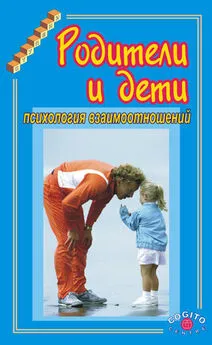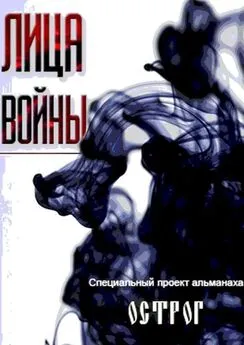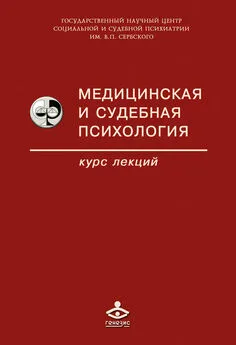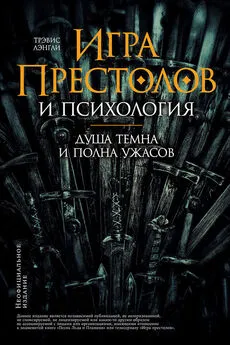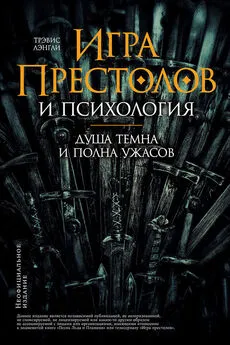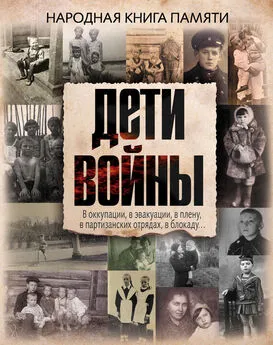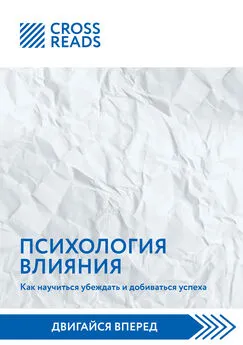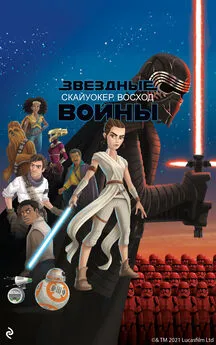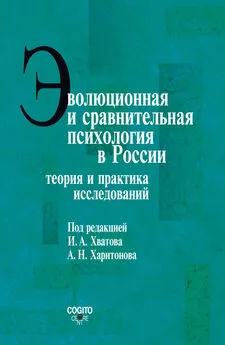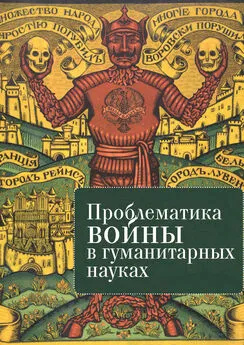Коллектив авторов - Звездные войны. Психология киновселенной
- Название:Звездные войны. Психология киновселенной
- Автор:
- Жанр:
- Издательство:Литагент 5 редакция
- Год:2016
- Город:Москва
- ISBN:978-5-699-88149-9
- Рейтинг:
- Избранное:Добавить в избранное
-
Отзывы:
-
Ваша оценка:
Коллектив авторов - Звездные войны. Психология киновселенной краткое содержание
Звездные войны. Психология киновселенной - читать онлайн бесплатно ознакомительный отрывок
Интервал:
Закладка:
Simpson, J. B. (1988). Simpson's contemporary quotations. Boston, MA: Houghton Mifflin.
Zimbardo, P. G. (1971, October 25). The psychological power and pathology of imprisonment. A statement prepared for the U. S. House of Representatives Committee on the Judiciary, Subcommittee No. 3: Hearings on Prison Reform, San Francisco, CA.
Zimbardo, P. G. (2006). On rethinking the psychology of tyranny: The BBC prison study. British Journal of Social Psychology, 45(1), 47–53.
Zimbardo, P. G. (2008). The Lucifer effect. New York, NY: Random House.
Zimbardo, P. G., Maslach, C, & Haney, C. (1999). Reflections on the Stanford Prison Experiment: Genesis, transformations, consequences. In T. Blass (Ed.), Obedience to authority: Current perspectives on the Milgram paradigm (pp. 193–237). Mahwah, NJ: Erlbaum
14
American Psychiatric Association (2013). Diagnostic and statistical manual of mental disorders (DSM-5) (5th ed.) Washington, DC: American Psychiatric Association.
Bluhm, R. (2014). No need for alarm: A critical analysis of Greene's dual-process theory of moral decision-making. Neuroethics, 7(3), 299–316.
Conway, P., & Gawronski, B. (2013). Deontological and utilitarian inclinations in moral decision making: A process dissociation approach. Journal of Personality and Social Psychology, 104(2), 216–235.
Dedeke, A. (2013). A cognitive-intuitionist model of moral judgment. Journal of Business Ethics, 126(3), 437–457.
Glut, D. F. (1980). The Empire strikes back. New York, NY: Ballantine.
Greene, J. D. (2015). The rise of moral cognition. Cognition, 135(1), 39–42.
Greene, J. D., Nystrom, L. E., Engell, A. D., Darley, J. M., & Cohen, J. D. (2004). The neural bases of cognitive conflict and control in moral judgment. Neuron, 44(2), 389–400.
Greene, J. D., Sommerville, R. В., Nystrom, L. E., Darley, J. M., & Cohen, J. D. (2001, September 14). An fMRI investigation of emotional engagement in moral judgment. Science, 293(5537), 2105–2108.
Haidt, J. (2001). The emotional dog and its rational tail: A social intuitionist approach to moral judgment. Psychological Review, 108(4), 814–834.
Kirkebøen, G., Vasaasen, E., &Teigen, К. H. (2013). Revisions and regret: The cost of changing your mind. Journal of Behavioral Decision Making, 26(1), 1–12.
Koop, G. J. (2013). An assessment of the temporal dynamics of moral decisions. Judgment and Decision Making, 8(5), 527–539.
Lammers, J., & Stapel, D. A. (2009). How power influences moral thinking. Journal of Personality and Social Psychology, 97(2), 279–289.
La Rosa, A. O., & Mir, J. R. (2013). On the relationships between disgust and morality: A critical review. Psicothema, 25(2), 222–226.
Lucas, B. J., & Livingston, R. W. (2014). Feeling socially connected increases utilitarian choices in moral dilemmas. Journal of Experimental Social Psychology, 53(1), 1–4.
Moore, А. В., Clark, B. A., & Kane, M. J. (2008). Who shalt not kill? Individual differences in working memory capacity, executive control, and moral judgment. Psychological Science, 19(6), 549–557.
Palmer, С J., Paton, В., Ngo, Т. T, Thomson, R. H., Hohwy, J., & Miller, S. M. (2013). Individual differences in moral behaviour: A role for response to risk and uncertainty? Neuroethics, 6(1), 97–103.
Sanfey, A. G., Rilling, J. K., Aronson, J. A., Nystrom, L. E., & Cohen, J. D. (2003, June 13). The neural basis of economic decision-making in the Ultimatum Game. Science, 300(5626), 1755–1758.
Starcke, K., Ludwig, A., & Brand, M. (2012). Anticipatory stress interferes with utilitarian moral judgment. Judgment and Decision Making, 7(1), 61–68.
Stern, M., & Hidalgo, P. (1996). Galaxy guide 3: The Empire strikes back. Honesdale, PA: West End Games.
Wallach, W. (2010). Cognitive models of moral decision making. Topics in Cognitive Science, 2(3), 420–429.
15
Dixon, F. A., Lapsley, D. K., & Hanchon, T. A. (2004). An empirical typology of perfectionism in gifted adolescents. Gifted Child Quarterly, 48(2), 95–106.
Pittman, F. (1993/2012). Fathers and sons. Psychology Today: https://www.psychologytoday.com/articles/200910/fathers-and-sons.
Rotter, J. B. (1945). Social learning and clinical psychology. New York, NY: Prentice-Hall.
Rotter, J. B. (1966). Generalized expectancies for internal versus external locus of control of reinforcement. Psychological Monographs, 80 (whole no. 609).
Sorotzkin, B. (1985). The quest for perfection: Avoiding guilt or avoiding shame? Psychotherapy, 22(3), 564–571.
Stossel, S. (2014, November/December). A brief history of anxiety: The invention of a modern malaise. Psychotherapy Network: http://www.psychotherapynetworker.org/magazine/recentissues/2014-novdec/item/2573-a-brief-history-of-anxiety.
Tolin, D. (2012). Face your fears: A proven plan to beat anxiety, panic, phobias, and obsessions. Hoboken, NJ: Wiley.
Verhaagen, D. (2010). Therapy with young men: 16–24 year olds in treatment. New York, NY: Routledge.
16
Ball-Rokeach, S. J., Rokeach, M., & Grube, J. W (1984). Great American values test: Influencing behavior & belief through television. New York, NY: Free Press.
Beaver, K. M., Wright, J. P., DeLisi, M., & Vaughn, M. G. (2012). Dopaminergic polymorphisms and educational achievement: Results from a longitudinal sample of Americans. Developmental Psychology, 48(4), 932–938.
Burg, J. M. (2011). The healthy qualities of mindful breathing: Associations with rumination and depression. Cognitive Therapy and Research, 35(2), 179–185.
Cameron, C. D., & Fredrickson, B. L. (2015). Mindfulness facets predict helping behavior and distinct helping-related emotions. Mindfulness, 1–8.
Comings, D. E., Rosenthal, R. J., Lesieur, H. R., et al. (1996). A study of the dopamine D2 receptor gene in pathological gambling. Pharmacogenetics and Genomics, 6(3), 223–234.
Congressional Record (2001, March 28). Roy E. Disney Center for the Performing Arts. Congressional Record, Pt. 4, March 27, 2001, to April 23, 2001, p. 4936. Washington, DC: U. S. Congress.
Conrad, A., Miiller, A., Doberenz, S., Kim, S., Meuret, A. E., Wollburg, E., & Roth, W. T. (2007). Psychophysiological effects of breathing instructions for stress management. Applied Psychophysiology and Biofeedback, 32(2), 89–98.
Dagher, A., & Robbins, T. W. (2009). Personality, addiction, dopamine: Insights from Parkinson's disease. Neuron, 61(4), 502–510.
Dalley, J. W, Fryer, T. D., Brichard, L., Robinson, D. S., Theobald, D. E., et al. (2007). Nucleus accumbens D2/3 receptors predict trait impulsivity and cocaine reinforcement. Science, 315(5816), 1267–1270.
Davidson, R. J., Putnam, K. M., & Larson, C. L. (2000). Dysfunction in the neural circuitry of emotion regulation – a possible prelude to violence. Science, 289(5479), 591–594.
Di Chiara, G., Bassareo, V., Fenu, S., De Luca, M. A., & Spina, L. (2004). Dopamine and drug addiction: The nucleus accumbens shell connection. Neuropharmacology, 47(Supplement 1), 227–241.
Dublin, J. E. (1976). «Beyond» gestalt: Toward integrating some systems of psychotherapy. Psychotherapy, 13(3), 225–231.
Feldman, G., Greeson, J., & Senville, J. (2010). Differential effects of mindful breathing, progressive muscle relaxation, and loving-kindness meditation on decentering and negative reactions to repetitive thoughts. Behaviour Research and Therapy, 48(10), 1002–1011.
Festinger, L. (1957). A theory of cognitive dissonance. Stanford, CA: Stanford University Press.
Gratz, K. L., Rosenthal, M. Z., Tull, M. T, Lejuez, С W, & Gunderson, J. G. (2006). An experimental investigation of emotion dysregulation in borderline personality disorder. Journal of Abnormal Psychology, 115(4), 850–855.
Haney, C, Banks, W. C, & Zimbardo, P. G. (1973). Study of prisoners and guards in a simulated prison. Naval Research Reviews, 9, 1–17.
Hayes, S. C, Wilson, K. G., Gifford, E. V., Follette, V. M., & Strosahl, K. (1996). Experiential avoidance and behavioral disorders: A functional dimensional approach to diagnosis and treatment. Journal of Consulting and Clinical Psychology, 64(6), 1152–1168.
Hearne, K. (2015). Star Wars: Heir to the Jedi. New York, NY: Del Rey.
Hogan, K., & Speakman, J. (2006). Covert persuasion: Psychological tactics and tricks to win the game. Hoboken, NJ: Wiley.
Homer, P. M., & Kahle, L. R. (1988). A structural equation test of the value-attitude-behavior hierarchy. Journal of Personality and Social Psychology, 54(4), 638–646. Israel,S.,Weisel,O.,Ebstein,R.P.,&Bornstein,G.(2012). Oxytocin,butnotvasopressin, increases both parochial and universal altruism. Psychoneuroendocrinology, 37(8), 1341–1344.
Jung, С G. (1937/1973). Letter to Kendig Cully: 25 September 1937. In G. Adler & A. Jaffe (Eds.), Letters of С G. Jung, 1906–1950 (p. 237). London, UK: Routledge. Kim, S., Roth, W T, & Wollburg, E. (2015). Effects of therapeutic relationships, expectancy, and credibility in breathing techniques for anxiety. Bulletin of the Menninger Clinic, 79(2), 116–130.
Lucerno, J. (2005). Star Wars: Dark Lord: The rise of Darth Vader. New York, NY: Del Rey.
Marshall-Berenz, E. С, Vujanovic, A. A., Bonn-Miller, M. O., Bernstein, A., & Zvolensky, M. J. (2010). Multimethod study of distress tolerance and PTSD symptom severity in a trauma-exposed community sample. Journal of Traumatic Stress, 23(5), 623–630.
Milgram, S. (1963). Behavioral study of obedience. Journal of Abnormal and Social Psychology, 67(4), 371.
Nock, M. K., & Mendes, W. B. (2008). Physiological arousal, distress tolerance, and social problem-solving deficits among adolescent self-injurers. Journal of Consulting and Clinical Psychology, 76(1), 28–38.
Schwartz, C, Meisenhelder, J. В., Ma, Y., & Reed, G. (2003). Altruistic social interest behaviors are associated with better mental health. Psychosomatic Medicine, 65(5), 778–785.
Stotts, A. L., Vujanovic, A., Heads, A., Suchting, R., Green, С. E., & Schmitz, J. M. (2014). The role of avoidance and inflexibility in characterizing response to contingency management for cocaine use disorders: A secondary profile analysis. Psychology of Addictive Behaviors. Advance online publication http://dx.doi.org/10.1037/adb0000011.
Stover, M. W. (2005). Star Wars: Episode III: Revenge of the Sith. London, UK: Century.
Swartz, J. R., Knodt, A. R., Radtke, S. R., & Hariri, A. R. (2015). A neural biomarker of psychological vulnerability to future life stress. Neuron, 85(3), 505–511.
Tetlock P. E. (1989). Structure and function in political belief systems. In A. R. Pratkanis, S. J. Breckler, & A G. Greenwald (Eds.), Attitude structure and function (pp. 129–151). Hillsdale, NJ: Erlbaum.
Tomer, R., Goldstein, R. Z., Wang, G. J., Wong, C, & Volkow, N. D. (2008). Incentive motivation is associated with striatal dopamine asymmetry. Biological Psychology, 77(1), 98–101.
Volkow, N. D., Wang, G. J., Telang, F., Fowler, J. S., Logan, J., Childress, A. R., Jayne, M., Ma, Y. & Wong, C. (2006). Cocaine cues and dopamine in dorsal striatum: Mechanism of craving in cocaine addiction. Journal of Neuroscience, 26(24), 6583–6588.
Vowles, K. E., & McCracken, L. M. (2008). Acceptance and values-based action in chronic pain: A study of treatment effectiveness and process. Journal of Consulting and Clinical Psychology, 76(3), 397–407.
Wallmark, E., Safarzadeh, K., Daukantaite, D., & Maddux, R. E. (2013). Promoting altruism through meditation: An 8-week randomized controlled pilot study. Mindfulness, 4(3), 223–234.
Wulfert, E., Block, J. A., Santa Ana, E., Rodrigues, M. L., & Colsman, M. (2002). Delay of gratification: Impulsive choices and problem behaviors in early and late adolescence. Journal of Personality, 70(4), 533–552.
Читать дальшеИнтервал:
Закладка:

